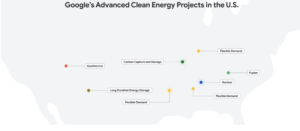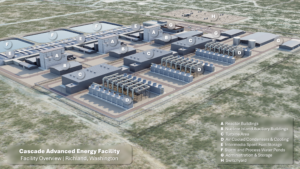The Federal Energy Regulatory Commission (FERC) on May 13 of this year issued an order addressing the formula rate filings and requests for transmission rate incentives for the Valley Link Transmission Project Portfolio. The project is a $3-billion, 417-mile multi-state transmission initiative spanning Maryland, Virginia, and West Virginia (collectively, Valley Link).
While FERC approved several incentive rate treatments and accepted the proposed formula rates subject to further proceedings, it notably rejected Valley Link’s request for a 60% equity/40% debt hypothetical capital structure incentive (60/40 hypothetical capital structure).
COMMENTARY
FERC’s decision on this issue marks an apparent departure from prior practice in that Valley Link’s showing and rationale were comparable to those submitted by developers granted the incentive in past proceedings. The order provides little guidance on what kind of further showing by Valley Link might have been sufficient.
The order was accompanied by partial dissents from FERC Chairman Mark Christie, who reiterated and expanded upon his criticisms regarding the agency’s transmission incentives policy and would have denied all the incentives, and Commissioner David Rosner, who would have granted authorization to use the requested hypothetical capital structure.
Background and Project Overview
Valley Link Transmission, a joint venture among established transmission owners, sought approval for proposed formula rates and a suite of transmission incentives pursuant to Federal Power Act section 219 for its project portfolio, which was selected through PJM’s 2024 Regional Transmission Expansion Plan (RTEP) process to address reliability needs driven by rapid load growth and changes in the generation mix. The project portfolio includes two new 765-kV transmission lines and four substations, with an in-service deadline of December 2029.
Incentives Granted and Denied
FERC granted Valley Link several incentive rate treatments, including:
- Abandoned Plant Incentive: Recovery of 100% of prudently incurred costs if the project or any component is abandoned for reasons outside Valley Link’s control.
- CWIP Incentive: Inclusion of 100% construction work in progress in rate base during construction.
- Pre-Commercial Cost Recovery: Authorization to establish a regulatory asset for pre-commercial costs, with carrying charges.
- RTO Participation Adder: A 50-basis point return on equity (ROE) adder for participation in PJM, subject to the total ROE being within the zone of reasonableness.
However, FERC rejected Valley Link’s request for a 60/40 hypothetical capital structure, finding that the applicant had not adequately supported the need for this specific capital structure and that the record did not justify its use. The commission directed that the appropriate capital structure be determined in the hearing and settlement judge procedures established for the proceeding.
Procedural and Substantive Issues
The order initiates a Federal Power Act section 206 proceeding to examine the justness and reasonableness of Valley Link’s proposed formula rates, ROE, and protocols. FERC set these matters for hearing and settlement judge procedures, emphasizing the need for transparency and procedural safeguards in the review of annual transmission revenue requirements.
The commission addressed the extensive protests from consumer advocates, state agencies, and other stakeholders, many of whom raised concerns about the openness and competitiveness of the PJM RTEP process, the risk of duplicative cost recovery, and the appropriateness of incentives for a joint venture among incumbent utilities. FERC found that the project portfolio was entitled to the rebuttable presumption of eligibility for incentives due to its selection in the PJM RTEP process but acknowledged concerns regarding stakeholder participation and urged PJM to improve its processes.
Chairman’s Dissent Highlights Continued Concerns with Incentives Policy
Chairman Christie issued another scathing dissent criticizing the Commission’s continued approval of transmission incentives—particularly CWIP, Abandoned Plant, and RTO Participation Adders—without sufficient consumer protection or meaningful scrutiny of project need and prudence. He drew parallels to the failed Potomac Appalachian Transmission Highline project, for which consumers paid substantial costs despite the project never being constructed, and which he observed shared common upstream ownership with Valley Link. The chairman’s dissent calls for a fundamental reform of FERC’s incentive policies to require state-level certification of need and prudence before incentives are granted.
Commissioner Rosner also dissented in part, objecting to the denial of the hypothetical capital structure incentive. He argued that the decision represented an unwarranted departure from Commission precedent and introduced regulatory uncertainty, particularly for new joint ventures undertaking large-scale reliability projects.
Implications
The commission’s rejection of the hypothetical capital structure incentive for Valley Link signals a potential shift in its approach to transmission incentives, particularly for new joint ventures formed by incumbent utilities. However, it remains unclear whether and how this will affect transmission owners that are not affiliates of incumbent utilities.
The decision demonstrates the commission’s willingness to scrutinize the evidentiary basis for incentive requests and subject key elements of project ratemaking to further hearing and settlement procedures. While the strong dissents highlight ongoing divisions within the commission regarding the balance between promoting transmission investment and protecting consumers from excessive costs, the extent to which those divisions will persist following the Chairman’s expected departure next month remains to be seen.
The outcome of the hearing and settlement proceedings, as well as any future commission action on incentive policy, will be watched closely by transmission developers, state regulators, and consumer advocates.
—Maxwell Multer is counsel in Nixon Peabody LLP’s Project Finance & Public Finance practice.










